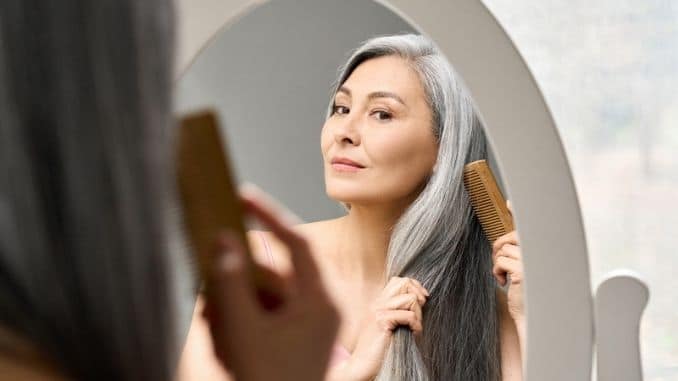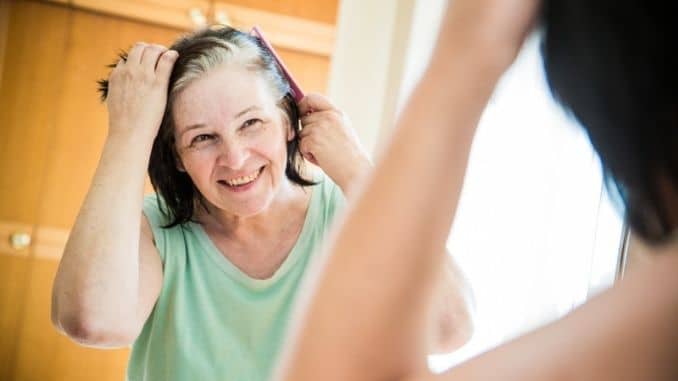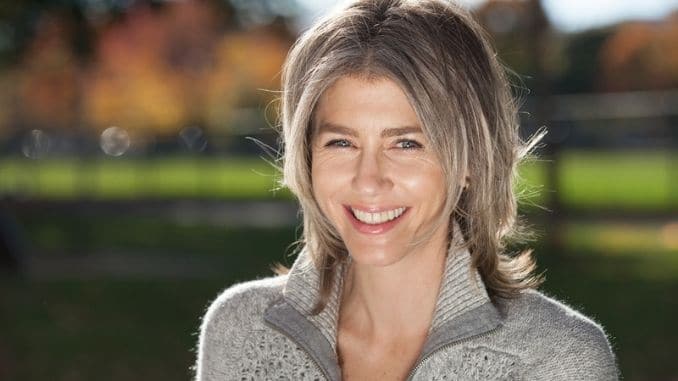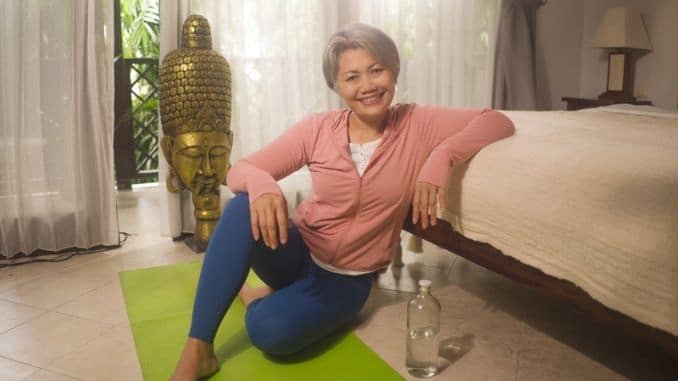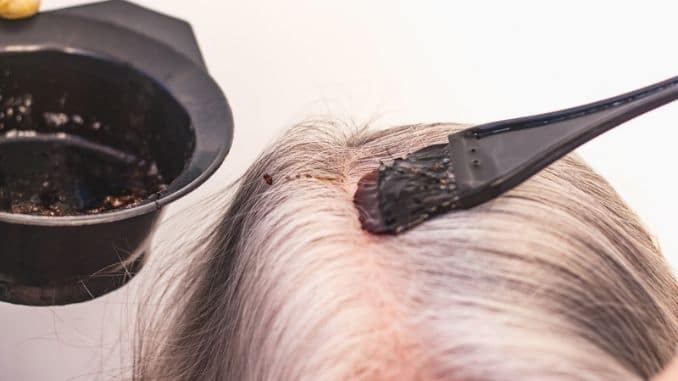During the extended shut-downs that accompanied the COVID-19 pandemic, many women lost access to their hairdressers. With salons closed for weeks on end, going gray became a trend, and one that doesn’t seem to be going anywhere.
There is no shortage of options when it comes to women's hair color. But having had a taste of a dye-free life, some women are choosing to embrace their gray hair for good. If the idea sounds attractive to you, we have some tips for how you can do that while still feeling confident about your appearance.
Is Going Gray Right for You?
Before you take the plunge, it may help to be sure that you’re going to be happy with your choice. You can always change your mind down the road, but you can save yourself some angst and effort if you think about it a little bit first.
First, let's look at some of the potential drawbacks of going gray.
Drawbacks of Going Gray
It may age you.
This is probably the biggest reason women continue to color their hair. According to a 2016 survey, men with a significant covering of silver hair appeared to be three years older, while women with silver hair added six years to their age. The pollsters theorized that the results are a bit kinder for men as having any hair at all is seen as better than going bald.
You may feel older.
The old saying goes that if you look good you feel good. Of course, this all depends on your personality and self-image. Some women have no problem going gray and feel completely confident about it. But others may look in the mirror and feel like the gray hair ages them more than they'd like. According to the survey, 72 percent of women dreaded going gray, compared to 36 percent of men.
Others may see you as less competent if they notice you at all.
In recent research, scientists found that women who let their natural gray hair show was seen as less competent and pleasant than those with colored hair if they were seen at all. Many women with gray hair were more easily overlooked or ignored and experienced age discrimination in the workplace.
These surveys present harsh results and they may not seem fair, but it’s important to be aware of viewpoints you may encounter once you go gray. On the other side of the coin, there can be many positive benefits.
Benefits of Going Gray
You may feel more authentic.
Many women allow their gray hair to grow in to feel more authentic, according to a recent survey. Researchers from the University of Exeter surveyed women who chose not to dye their gray hair and found that these women were more comfortable showing their “true” selves, rather than trying to look younger than their age. They also found solidarity and sisterhood among other women making the same choices.
You’ll save money and time.
Most women love the idea of no longer having to spend the money or time on coloring their hair. As an example, if you dye your hair every 4 weeks or so and spend about $60 for each appointment, that's about $21,000 over 30 years.
Adding up the time spent at the salon over the same period and you have 30 days—a month of your life spent in the salon. If all you have to do at the salon is get your hair cut, you’ll save a lot of time and money.
You’ll reduce your exposure to toxic ingredients in hair dyes.
Though manufacturers have gone a long way in improving the ingredients used in hair dyes, there are still some toxic ingredients needed to make the dye adhere to the hair. Outside of henna and some rare formulas, most contain paraphenylenediamine (PPD) or para-toluenediamine (PTD) along with quaternium-15 and resorcinol, all of which have been linked to health problems at long-term exposures.
Your hair and scalp may benefit.
Go without hair dye for a while and you’ll notice your hair and scalp look and feel better. Without the chemical assault, scalp itching often disappears and your hair may appear stronger while you experience less shedding.
You can have fun adopting a new look.
Women also have more role models than ever for going gray. Actresses like Jamie Lee Curtis, Helen Mirren, Nichelle Nichols, and Meryl Streep have all rocked silver styles that look sophisticated and powerful. Going gray can inspire you to adopt a new look complete with new colors that enhance your skin tone, allowing you to feel more confident than ever.
Go Gray for a Day
If you’re still not sure whether you’re ready to go gray, you can test the waters for a day. Look for a temporary hair color spray in silver. Mist the color over your hair for a shimmering, temporary silver-gray color. This can give you a chance to see what it would look like, and determine whether you’re comfortable with it. These sprays wash out with a single shampoo session.
6 Steps to Go Gray Gracefully
If you’re convinced that going gray is right for you, follow these six steps.
1. Realize it’s going to take time.
Going gray is a process, and is likely to take time. Everyone is different. Some women start going gray at a younger age than others. Depending on where you are on the journey, you can choose simply to let nature take its course, or hang in there with your stylist for a little while longer.
2. Go cold turkey.
If you’re tired of coloring and you know you’re ready to go gray, you can simply let your gray hair grow in. Stop coloring and shift to cuts only.
This is the easiest and most chemical-free way to go about it, but because it takes time—several months to a couple of years—it may make you uncomfortable for a while. Walking around in public with gray roots may feel strange, and you may have scheduled events where you want to look your best.
If it doesn’t bother you and you have support from your girlfriends, go for it! If you don’t like it, you can experiment with hats, scarves, and wigs while you’re waiting, or try step #3: cutting your hair.
3. Get interested in short hairstyles.
Whether going cold turkey or transitioning more slowly, haircuts can help in the process. Keeping your style up to date can not only complement your new hue but can also keep you from looking older than your years.
One option is to grow the gray roots long enough and then get a short haircut. This allows you to go gray directly, though it will take some time to grow the hair long enough for the short haircut you want. Pixie and even buzz cuts can look edgy and stylish—look around for something that catches your eye, then talk to your stylist about it.
The other option is to get frequent cuts as your gray hair grows out. These trim away those colored ends so that your gray look takes over more quickly.
4. Get help from your stylist.
If you aren’t comfortable with the cold turkey option, your stylist can help. Particularly if you are still working or have other responsibilities that put you in the public eye, this may be a better option for you.
This is a pricier option, so be prepared. It also exposes you to the chemicals in dyes for a little longer, which can damage fragile hair and cause an itchy scalp.
Your stylist, though, can color your hair to be closer to how it will be when it turns completely gray, allowing you to have more control over the transition time. You can avoid the awkward stages of growing your hair out, disguise demarcation lines in your hair, and enjoy your longer style if you like.
The actual process is more like getting highlights than getting your hair colored all over. To match the salt-and-pepper look of your roots, your stylist is likely to add highlights that will match that gray color all over your hair, so that it looks more uniform until it grows out more.
Talk to your stylist about your options. Whatever you do, avoid the at-home options. Transitioning to gray is a more complicated process than simply coloring your hair all over, and you’ll be happier with professional help.
5. Be prepared for additional management.
Since you're probably going with platinum or cooler dye shade while you're transitioning, you may find that your highlights can look a little brassy over time. You can go back to your stylist for a touch-up or gloss to keep that brassiness at bay.
You may also want to try a purple-toned shampoo, conditioner, and even rinse, as these can help balance out that brassiness and keep your grays looking a prettier silver shade.
Gray hair is also dryer than colored hair, so you’ll want to step up your moisturization. Look for sulfate-free hair care and anti-frizz products, along with weekly hair masks that infuse moisture into your strands.
6. Experiment with new looks.
Most women find that with gray hair, they focus more on their faces and outfits to feel confident. A visit to the makeup counter can help you find new shades that look best with your skin, helping to bring out your features, while trying on some new colors can also help put your grays in the best light.
Bold lip colors often work well with gray hair and more accents around the eyes can help you retain a feminine and vital look. More color in your wardrobe is also a good idea, as otherwise gray hair can wash you out. Try cool tones like blue-grays, lavender, and periwinkle, along with silver jewelry.

The reality is that going gray is inevitable, so it is better to embrace this change when the timing feels right for you. Attitude is everything, and confidence is attractive. Whether you ultimately decide to let nature take its course, or you let your stylist help gradually transition your hair, understand that gray hair can be truly beautiful.
Don't let your hormones control your life. Learn the safe and natural way to balance your hormones here.

